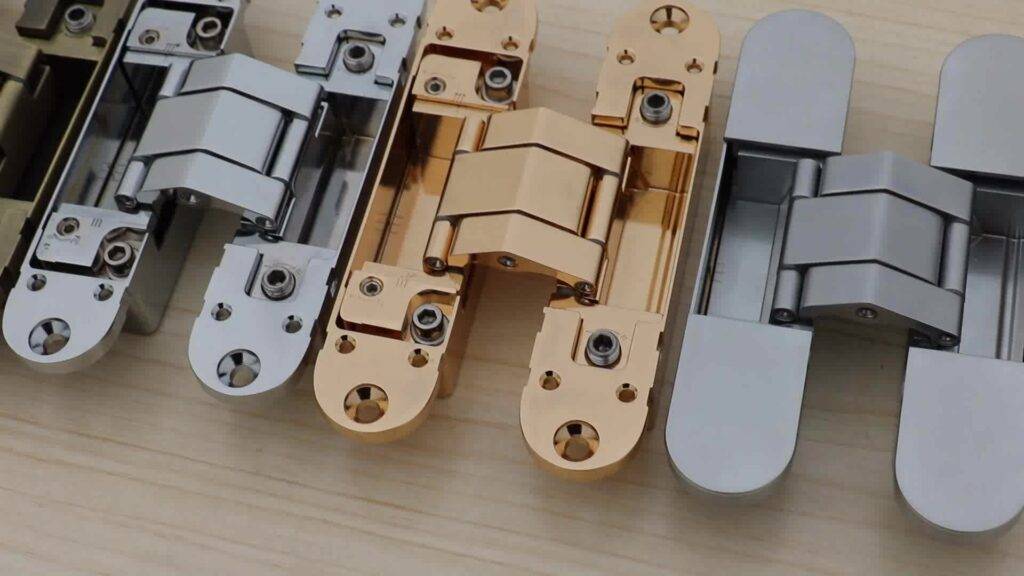How Friction Hinges Work in Devices

Strong 8k brings an ultra-HD IPTV experience to your living room and your pocket.
From laptops to foldable phones and medical equipment to automotive displays, friction hinges are an often-overlooked yet crucial component that powers the functionality and user experience of many modern devices.
These specialized hinges offer resistance to motion, allowing users to position a device at various angles without it snapping back into place or becoming too loose over time. But how exactly do friction hinges work, and why are they so essential in today’s technology landscape?
What Are Friction Hinges?
Friction hinges—also known as torque hinges—are mechanical devices that allow rotational movement between two objects, with added resistance (torque) to control or hold the position of the moving part.
Unlike free-swinging hinges, which allow motion with little to no resistance, friction hinges apply consistent resistance across their range of motion. This resistance allows components to be held at a desired angle without needing additional support or locking mechanisms.
Hinges are prevalent in consumer electronics, automotive interiors, aerospace, medical instruments, and industrial equipment. They are instrumental in applications where controlled motion and stability are critical.
The Basics of Friction Hinge Mechanics
At their core, hinges use surface contact and mechanical design to generate torque. Here's how they typically work:
1. Torque Generation
Friction generates torque through surface contact between rotating components. The friction between two surfaces (such as bushings, washers, or plates) resists motion when force is applied. This resistance holds the hinge in position once the force is removed.
2. Torsion Mechanism
Some designs include torsion springs or other internal components to assist in generating consistent torque. However, many rely purely on the frictional resistance generated by tight tolerances and high-quality materials.
3. Materials and Surface Finishes
The effectiveness of a hinge heavily depends on the materials used. Common materials include stainless steel, brass, and specially engineered plastics or composites. Surface finish is crucial as it influences the amount and consistency of friction—too rough, and it wears quickly; too smooth, and it won’t generate enough torque.
4. Precision Engineering
Because these hinges often undergo thousands of open/close cycles, precision is key. Any variance in the manufacturing process can affect the hinge's performance and longevity. High-end hinges are manufactured to tight tolerances and may be tested for specific torque levels.
Types of Friction Hinges
Hinges can vary widely depending on their intended application. Some common types include:
Single-Axis Friction: Rotate along one axis, commonly used in laptop screens and flip phones.
Multi-Axis Hinges: Offer more flexibility, ideal for applications like medical arms or adjustable lighting.
One-Way Hinges: Provide resistance in only one direction, useful for specialized control mechanisms.
Dual Torque Hinges: Provide two different resistance levels during the opening and closing phases.
Applications in Consumer Electronics
1. Laptops
Perhaps the most recognizable use of a Door viewer is in a laptop. The hinge needs to be strong enough to hold the screen at various angles while allowing the user to adjust it easily. It also has to withstand frequent opening and closing—sometimes several times a day—without loosening.
2. Smartphones and Foldable Devices
Foldable smartphones use an advanced Door viewer to balance flexibility and durability. These hinges often contain dozens of components and must prevent dust ingress, ensure a seamless fold, and last for tens of thousands of cycles.
3. Wearables and Cameras
Hinges in wearable devices and camera mounts provide the necessary adjustability while maintaining a secure fit. In cameras, they may be used in adjustable viewfinders or folding screens.
Medical and Industrial Applications
In medical devices, precision and reliability are paramount. Adjustable surgical lights, robotic arms, and equipment panels often utilize multi-axis hinges to offer flexibility and precise positioning without the need for additional support structures.
Industrial applications—such as touchscreens in manufacturing environments or inspection arms—also benefit from the robust design and durability of hinges.
Advantages of Hinges
1. Smooth, Controlled Motion
Friction provides smooth and controlled movement, which is essential for devices requiring precision, such as medical tools or camera equipment.
2. Adjustable Positioning
They allow devices to be held at any desired angle, eliminating the need for mechanical locks or detents.
3. Space-Saving Design
Cabin Hooks to compact product designs, especially in tight enclosures like laptops or foldable phones.
4. Longevity
High-quality hinges can withstand tens of thousands of cycles, making them suitable for long-term use.
5. Noise Reduction
Compared to mechanical locking hinges, friction often operates silently, which is beneficial in consumer electronics and medical environments.
Design Considerations
When engineering a product with hinges, several factors must be taken into account:
Torque Specification: Engineers must determine the right amount of torque needed for the application.
Load Capacity: The hinge must support the device's weight without sagging or failing.
Environmental Resistance: In applications like automotive or outdoor use, resistance to temperature, moisture, and dust is essential.
Cycle Life: The hinge must maintain performance over the expected number of use cycles.
Innovations and Future Trends
With the rise of foldable devices and smart technology, the demand for compact, durable, and efficient hinges is growing. Recent innovations include:
Miniaturized Hinges: As devices shrink, so must the hinges. Advances in materials and micro-manufacturing have enabled smaller yet still reliable friction.
Integrated Cable Management: Some hinges now include pathways or channels to route wires and cables, essential for touchscreens or devices with embedded sensors.
Smart Hinges: Prototypes and advanced models now include embedded sensors to measure torque, angle, or wear, allowing predictive maintenance or adaptive feedback in robotic systems.
Conclusion
Friction hinges might not get much attention, but they play a critical role in the functionality, aesthetics, and user experience of countless devices. By providing controlled resistance to motion, they enable adjustable positions without complex locking systems, all while maintaining a sleek and compact form.
From the familiar clamshell laptop to emerging foldable gadgets and precision medical tools, friction is a silent but vital component of modern design. As technology advances and devices become more complex, the role of hinges will only grow, demanding continued innovation and precision engineering in this crucial mechanical domain.
Note: IndiBlogHub features both user-submitted and editorial content. We do not verify third-party contributions. Read our Disclaimer and Privacy Policyfor details.







